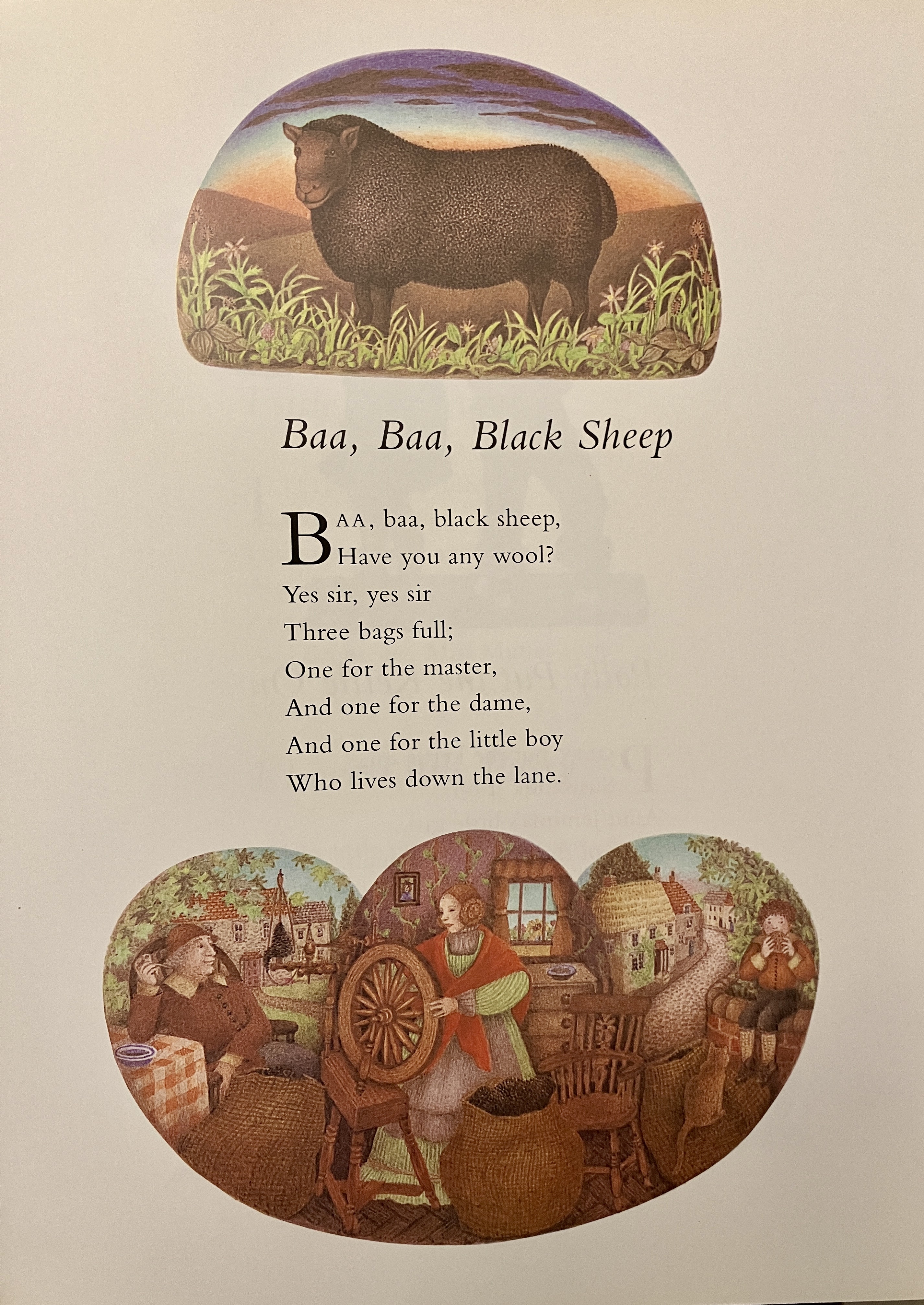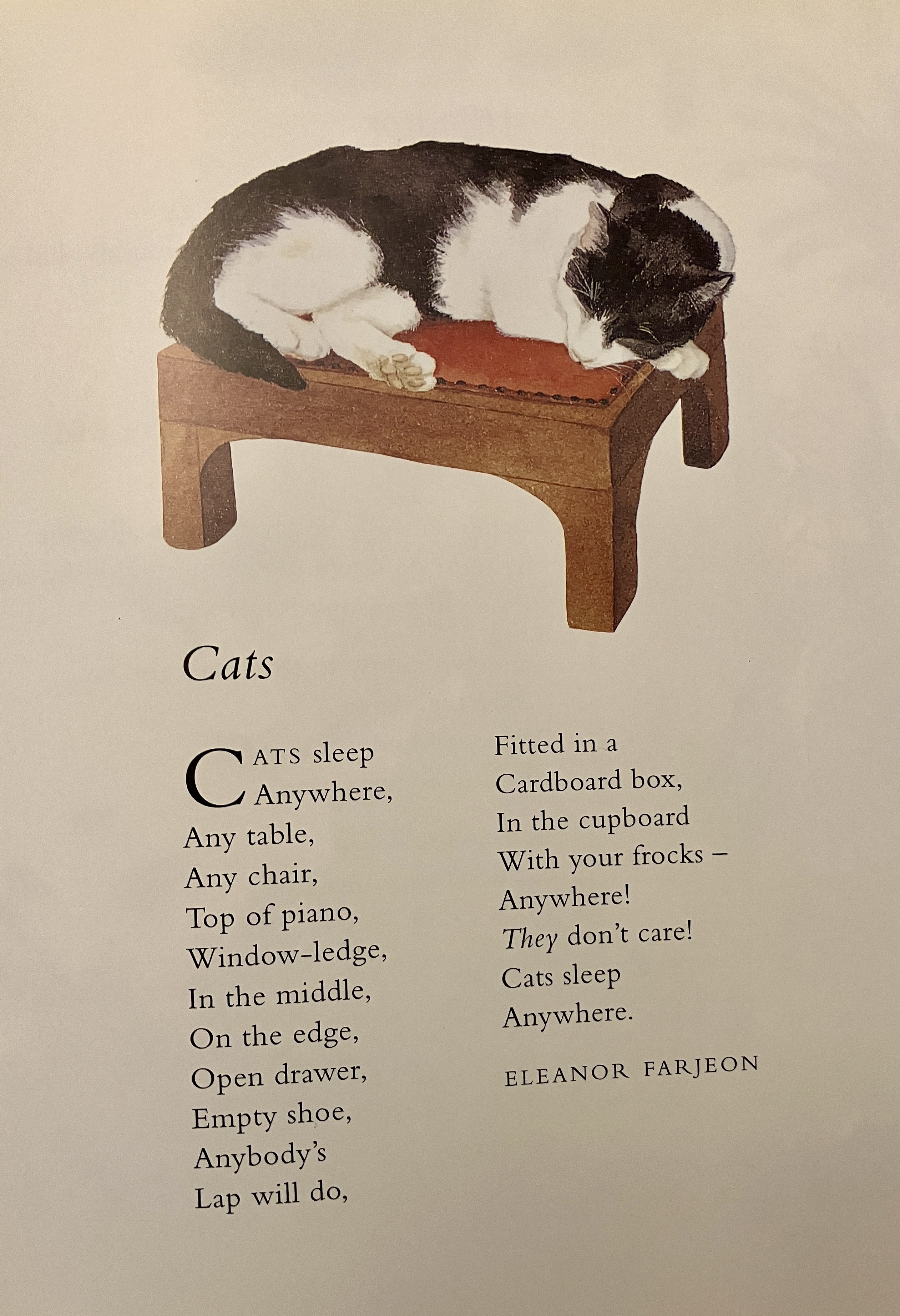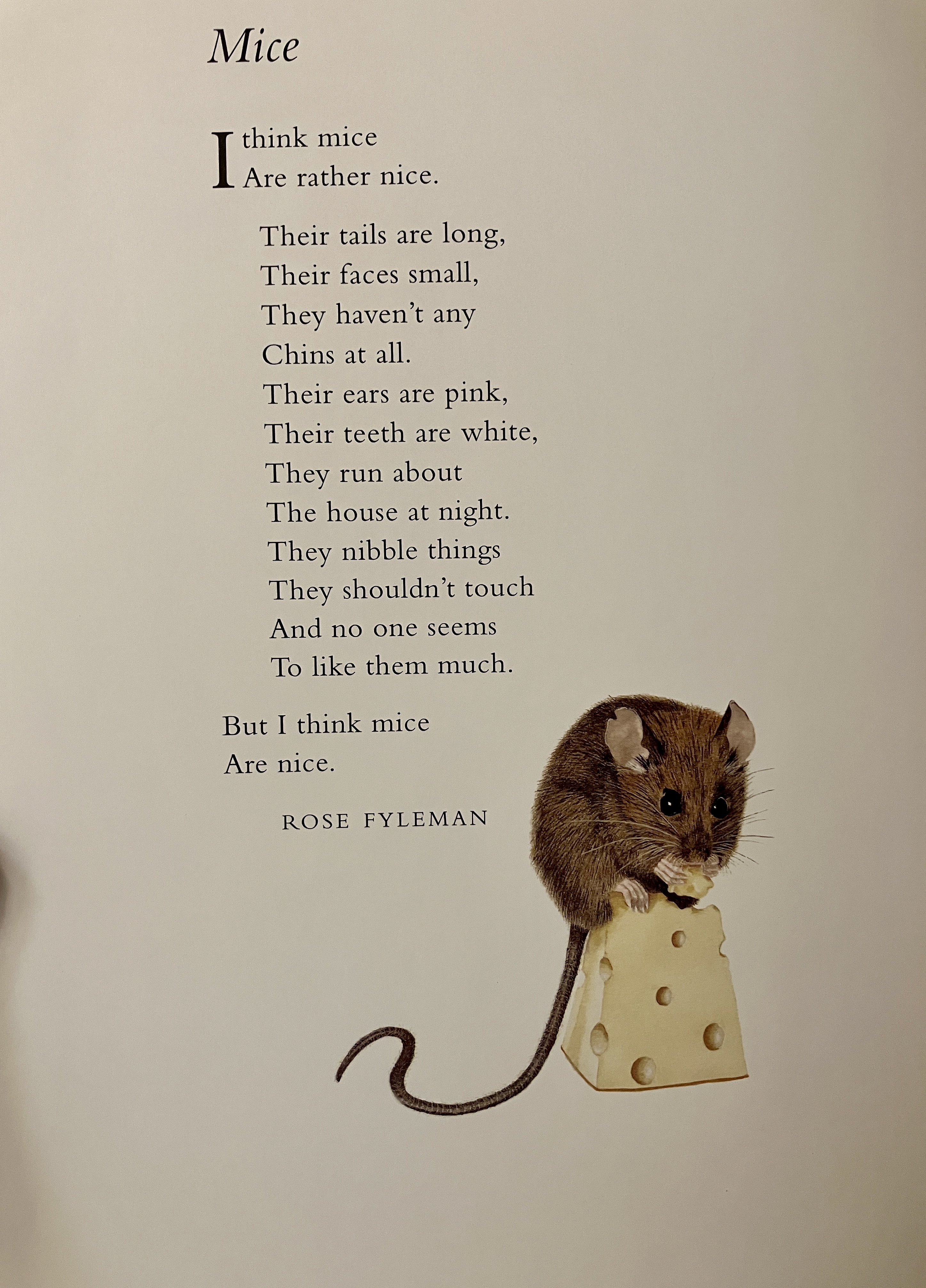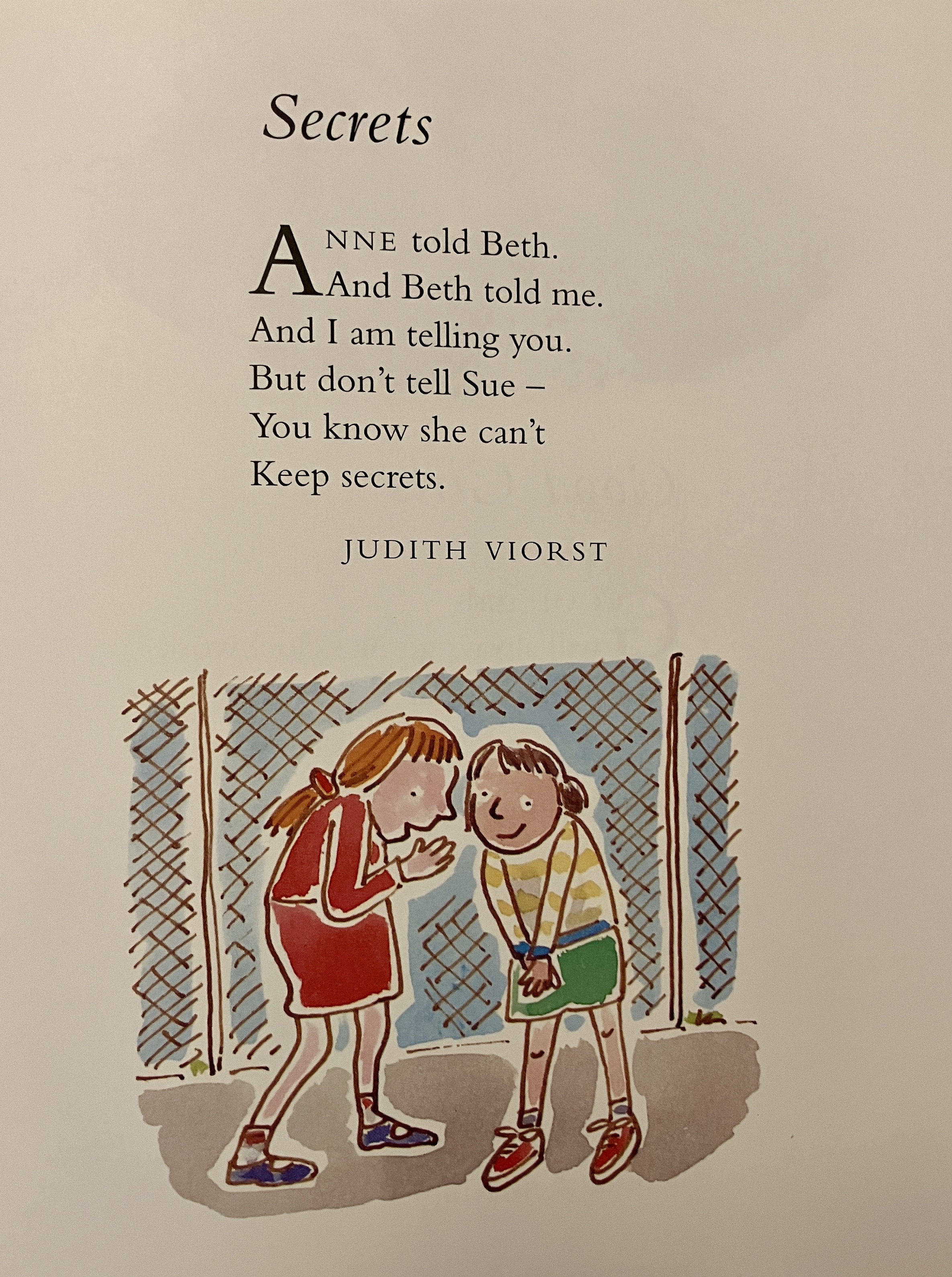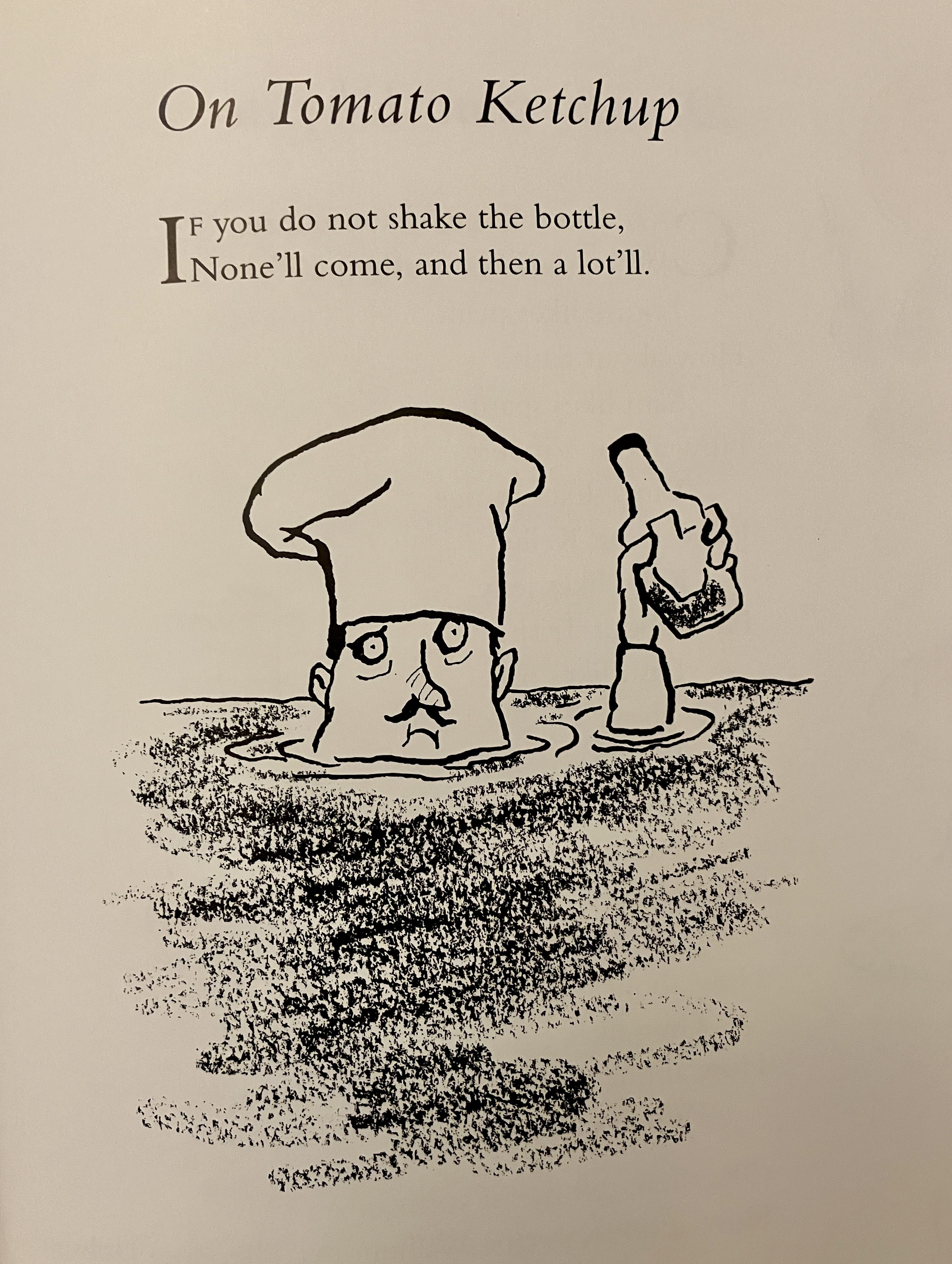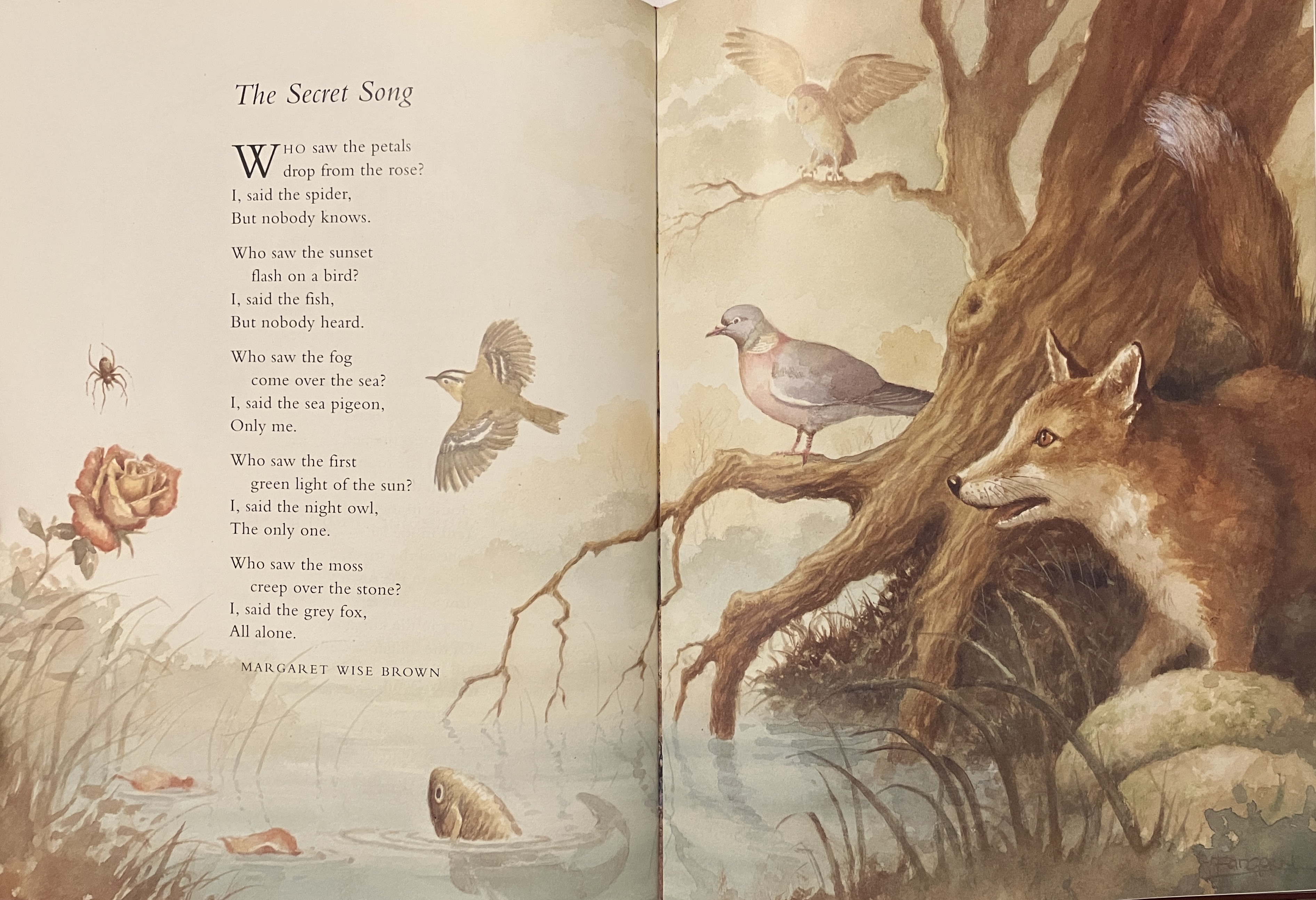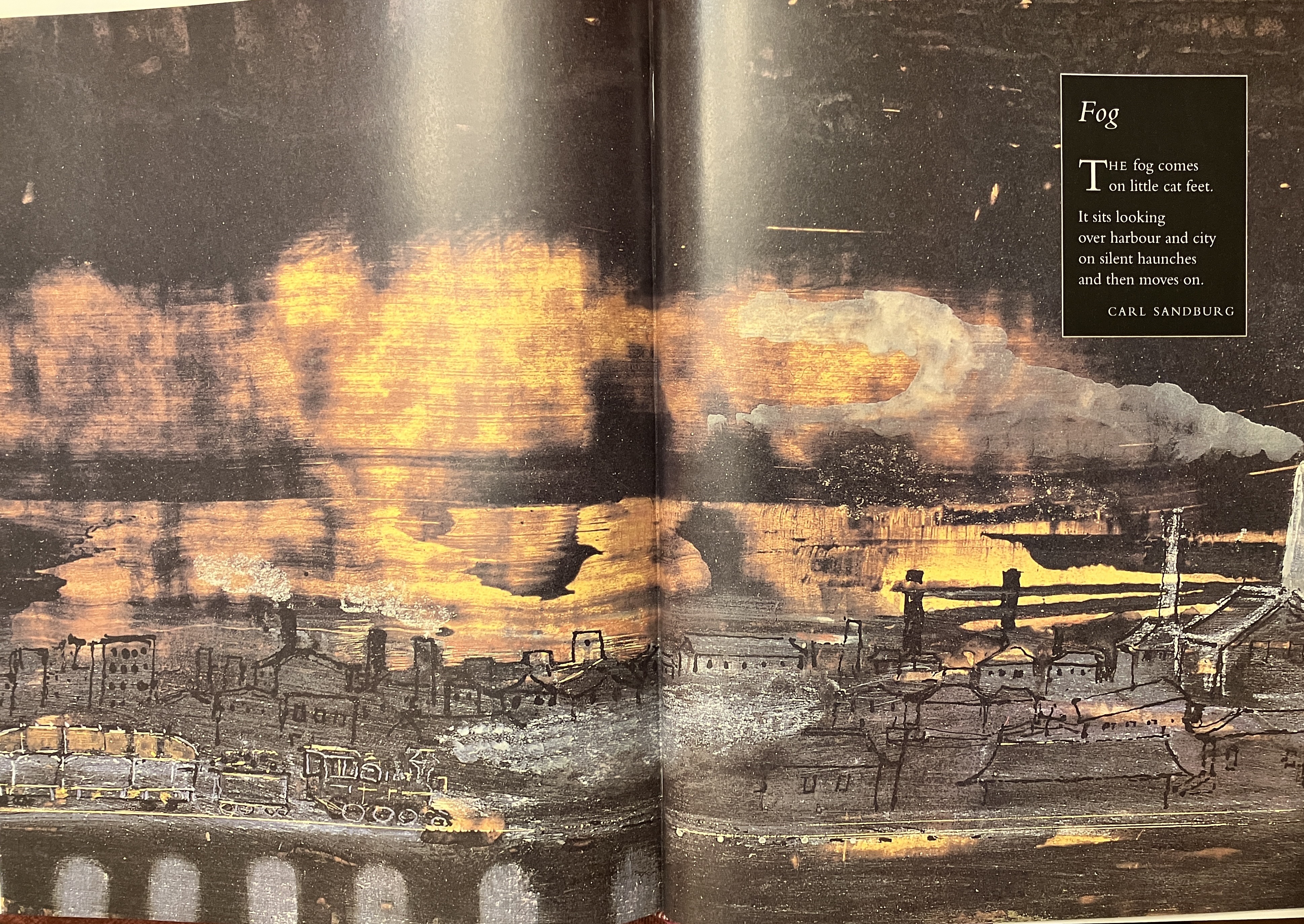Treasury of Children's Poetry
Library booksales are wildly hit-and-miss affairs, usually more of a miss. Once in a while, though, you can catch a break - like us at a sale earlier this year, where we walked out with several dozen books for $20. Of course, mere quantity means little if every book is rotten, but we were able to find a lot of good stuff. What helped, I think, is that staff gradually restocked the tables over the course of the morning, so the early birds weren’t able to pick out absolutely everything worth having (often to sell on eBay later, not even to enjoy for themselves!). Among those was a book I wasn’t familiar with, but might be the best of all: Treasury of Children’s Poetry, first published in 1998, edited by Alison Sage and with an introduction by Michael Rosen, author of the picture book We’re Going on a Bear Hunt and a poet with a few selections included here.
There are a few hundred poems altogether, divided into four parts of gradually increasing difficulty and sophistication: “Nursery Rhymes and First Poems,” “Rhymes and Poems for the Young,” “Poems for Older Children,” and “Older Poems and Classic Poetry.” Every page includes at least one illustration, ranging from classic, lavish artwork (e.g., by Jessie Wilcox Smith, who also illustrated my edition of A Child’s Garden of Verses) to simple doodles by modern artists.
Perhaps the best way to give an idea of the book is to go through it. It begins with a number of nursery rhymes, all the classics one might expect: “Humpty Dumpty,” “Jack and Jill,” “Mary, Mary, Quite Contrary,” and more. Incidentally, my wife wasn’t a fan of “Peter, Peter, Pumpkin-Eater” because of its portrayal of marital disharmony, and to be fair, it’s often observed that old nursery rhymes and fairy tales are strange and even disturbing when one thinks about them.
From there, as said above, the poems begin growing in sophistication, but for the most part aren’t terribly complex and focus on topics of interest to children. Usually, Sage grouped them into loose themes, so, for instance, you’ll have a few poems on animals next to each other.
Selections vary greatly in length and tone. As one might expect, short, comedic poems are very common.
That said, there are plenty of thoughtful, even sombre poems, especially in the final part. Shelley’s “Ozymandias” is included, for instance, as are Yeats’s “The Lake Isle of Innisfree,” Whitman’s “When I Heard the Learn’d Astronomer,” an extract of Tennyson’s “Charge of the Light Brigade,” and Kipling’s “If.” Even Wilfred Owen makes an appearance, with “Arms and the Boy.”
Honestly, I’m of two minds on having such a breadth of selections. Overall, I think the book and its format is great - children can start with easy poems, but can get a taste of more sophisticated work by flipping ahead a bit. It’s excellent practice, and was beneficial to me when I was growing up, to encourage children to occasionally attempt reading things somewhat above their current, ostensible level. This is especially true for cultural touchstones - a child’s first exposure to many great English poets could likely be here. Perhaps the child reading Shel Silverstein isn’t quite ready for, say, Blake or Eliot, but seeing such advanced work, it will sit in the back of his mind, ready for him to appreciate more fully later.
That said, I may have left out some of the war poems, or rather, chosen a tamer selection. A child at the level of “Baa, Baa, Black Sheep” is by no means ready to digest “If” or anything of Owen’s, though I suppose children that young aren’t reading independently yet.
So, I wouldn’t necessarily recommend the book to any and every child, but if he’s old enough to read on his own, it’s an excellent addition to the family library and a fine first exposure to the English literary tradition.
Let’s close as the book does, with Shakespeare’s reflection on age and aging from As You Like It.
